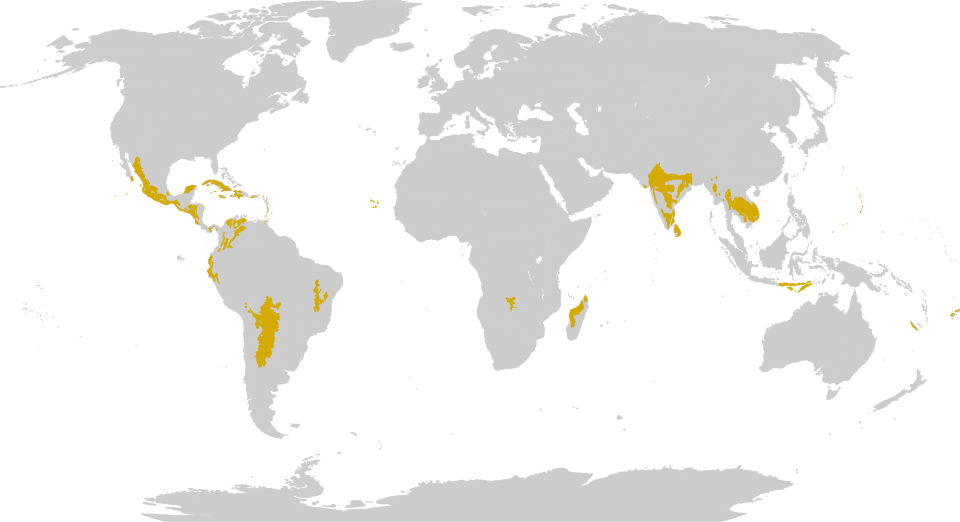Tropical and Subtropical Dry Broadleaf Forests (TSD)
- Shanti Bants
- Aug 26
- 2 min read
Tropical and Subtropical Dry Broadleaf Forests (TSD) are situated in tropical and subtropical regions, often in areas marked by distinct seasonal variations. These forests exist in climates that remain warm throughout the year, with average temperatures rarely falling below 20°C. They typically receive several hundred millimetres of rain annually, concentrated in a brief wet season, but also endure long dry periods lasting several months, depending on geographic location and local climate. These seasonal droughts significantly affect all living organisms in the forest, impacting their life cycles, reproductive habits, and survival strategies. During the dry season, water availability becomes a critical factor influencing the behaviour and adaptations of both plants and animals.

Deciduous trees dominate most of these forests, displaying a remarkable adaptation to the challenging dry season conditions. During this time, a leafless phase occurs, varying with species and environmental factors. As trees lose moisture through their leaves, shedding them helps trees like teak and mountain ebony conserve essential water resources during these dry months. The bare trees open up the canopy, allowing more sunlight to reach the forest floor, which promotes the growth of a thick and diverse underbrush. This underbrush is vital to the ecosystem, offering habitat and food for various species. Trees in moister areas or those with access to groundwater tend to be evergreen, retaining their foliage year-round. Additionally, regions with less fertile soil often have a higher proportion of evergreen trees. Notable tropical dry forest ecoregions include the East Deccan dry evergreen forests, the Sri Lanka dry-zone dry evergreen forests, and the Southeastern Indochina dry evergreen forests, all characterized by a significant presence of evergreen trees adapted to these challenging environments.
While less biologically diverse than rainforests, tropical dry forests host a wide range of wildlife, including various monkeys, deer, large cats, colourful parrots, different rodents, and ground-dwelling birds. The mammalian biomass in these dry forests tends to be higher than in rainforests, especially in Asian and African dry forests, where species have developed unique adaptations to thrive under seasonal climate constraints. Many of these species exhibit remarkable adaptations to the harsh climate, such as behavioural changes, dietary flexibility, and physiological adaptations that allow them to endure both intense heat and water scarcity during prolonged dry periods. The intricate relationships between the flora and fauna in these ecosystems underscore the resilience and complexity of life in tropical dry forests.





Comments